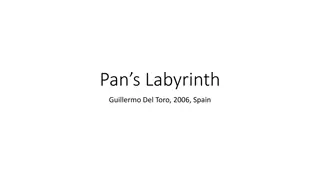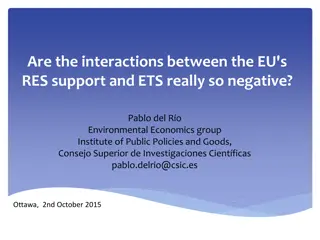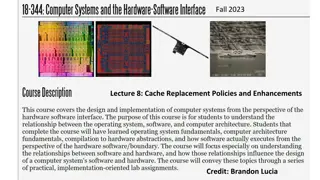
Dynamic Magnetic Behavior Study in Exchange-Coupled IrMn/NiFe System
Explore the re-entrant antiferromagnetism in the exchange-coupled IrMn/NiFe system. Investigate the magnetic properties, exchange coupling mechanism, and hysteresis loops in the NiFe/IrMn film. Understand the magnetization reversal and effects of exchange magnetic anisotropy. Discover insights into the AFM phase and spatial confinement in dot arrays through this comprehensive study.
Download Presentation

Please find below an Image/Link to download the presentation.
The content on the website is provided AS IS for your information and personal use only. It may not be sold, licensed, or shared on other websites without obtaining consent from the author. If you encounter any issues during the download, it is possible that the publisher has removed the file from their server.
You are allowed to download the files provided on this website for personal or commercial use, subject to the condition that they are used lawfully. All files are the property of their respective owners.
The content on the website is provided AS IS for your information and personal use only. It may not be sold, licensed, or shared on other websites without obtaining consent from the author.
E N D
Presentation Transcript
Re-entrant antiferromagnetism in the exchange-coupled IrMn/NiFe system L. Del Bianco, E. Bonfiglioli, F. Chinni, M. Tamisari, F. Spizzo Dipartimento di Fisica e Scienze della Terra, Universit di Ferrara, Italy lucia.delbianco@unife.it 101 Congresso Nazionale SIF, Roma 21-25 Settembre 2015
Objective Description of the dynamic magnetic behavior of the antiferromagnet in exchange-coupled FM/ AFM NiFe/IrMn bilayers Re-entrant antiferromagnetism From the continuous NiFe/IrMn film to dot arrays: spatial confinement and exchange coupling mechanism We study the magnetic properties of the AFM phase to gain an insight into the exchange coupling mechanism (exchange bias effect) We exploit the exchange coupling with a soft FM as a tool to gain an insight into the magnetic properties of the AFM
NiFe/IrMn film Si / Cu[5 nm] / Py[5 nm] / IrMn[6 nm] / Cu [5 nm] Py: Ni80Fe20IrMn: Ir25Mn75 Reference film: Si / Cu[5 nm] / Py[5 nm] / Cu [5 nm] Deposition by dc-magnetron sputtering Ar atmosphere, deposition rate 0.2 nm/s Hdep = 400 Oe
Hysteresis loops (5-400 K temperature range) 800 1.0 T = 5 K T = 300 K 600 Hex (Oe) 0.5 400 200 M/MS 0.0 0 -0.5 600 HC (Oe) 400 -1.0 -3 -2 -1 H (kOe) 0 1 2 200 0 Change of magnetic regime at T ~ 100 K 0 100 200 T (K) 300 400
step 1: FC@ Hcool =500 Oe Magnetization reversal study - SQUID measurement procedure 5 K 400 K step 2: M vs T @ Hinv Hinv 1.0 1.0 0.9 0.5 0.5 M/M0 Hright Hleft 0.0 M/MS 0.0 -0.5 T = 5 K Hinv = - 50 Oe Hinv = -100 Oe Hinv = -200 Oe -0.5 -1.0 -1.0 0 100 200 T (K) 300 400 -1.0 -0.5 0.0 H (kOe)
Py 1.0 Measurement on reference Py film in H = 50 Oe 0.5 M/M0 0.0 -0.5 Hinv = - 50 Oe Hinv = -100 Oe Hinv = -200 Oe -1.0 0 100 200 T (K) 300 400 1.00 0.95 0.90 0.85 Pronounced magnetization decrease in the bilayer is ascribed to the reduction of the exchange magnetic anisotropy in the Py layer 0.80 0 100 200 300 400
Py 1.0 AFM film consists of non- interacting nanograins 0.5 M/M0 0.0 Distribution of effective anisotropy energy barriers E -0.5 -1.0 -1) 1 Hinv = - 50 Oe Hinv = -100 Oe Hinv = -200 Oe [-d(MHinv/MS_Rif)/dT] (K 0.1 We obtain information on the anisotropy energy distribution of the AFM as it is felt by the FM component barrier 0.01 F. Spizzo et al., J. Phys.: Condens. Matter 25, 386001 (2013) 1E-3 0 100 200 T (K) 300 400
1 Hinv = - 50 Oe Hinv = -100 Oe Hinv = -200 Oe -1) [-d(MHinv/MS_Rif)/dT] (K IrMn 0.1 spin-glass-like behavior 0.01 Py (b) 1E-3 0 100 200 T (K) 300 400 bulk AFM nanograins V = 25 kTB/KIrMn size ~ 10 nm 1.8 106erg/cm3 KIrMn=
Si 10 nm Si Cu Cu IrMn NiFe (a) (a) (b) Existence of a disordered AFM region at the interface with the NiFe phase TEM results confirm our prediction on the structure of the AFM phase
T T > 100 K Only the interfacial AFM spins tightly anchored to the spin lattice of the bulk AFM nanograins contribute to Hex Hexdecreses and finally the EB effect disappears T ~ 100 K The frozen collective state breaks up. Polarizing action of bulk AFM spins on the interfacial ones prevents the development of a paramagnetic state. Re-entrant antiferromagnetism T< 100 K Hex is maximized AFM interfacial spins are frozen and subjected to a high effective anisotropy.
From the continuous film to dot arrays Si / Cu[5 nm] / IrMn[10 nm] / Py [5 nm] Electron beam lithography and lift-off FM AFM dc-magnetron sputtering (Hdep = 400 Oe) spatial confinement FM AFM
MOKE - FC hysteresis loops (Hcool= 500 Oe; 10-300 K temperature range) A = 1000 nm B = 500 nm C = 300 nm 1000 1000 800 800 (Oe) (Oe) 600 HEX 600 HC 400 400 200 200 0 0 50 100 150 200 250 300 50 100 150 200 250 300 Temperature (K) Temperature (K)
1000 nm 500 nm 300 nm At low temperature 1000 800 (Oe) The correlation length among the AFM interfacial spins increases with reducing T HEX 600 400 200 0 50 100 150 200 250 300 Temperature (K)
Dependence of Hex on the AFM correlation length Object Oriented MicroMagnetic Framework Dot size = 1200 nm FM AFM OOMMF cell size = 10 nm KAFM= 2 107erg/cm3cells: FM/AFM exchange interaction = 10-7 erg/cm Different cell size: 10, 20, 100, 200, 300 nm F. Spizzo et al., Phys. Rev. B 91 (2015) 064410
Object Oriented MicroMagnetic Framework 740 Dependence of Hex on the AFM correlation length 720 (Oe) Dot size = 1200 nm 700 HEX All the AFM cells with high K (100% pinning centers) 680 Different cell size: 10, 20, 100, 200, 300 nm 660 Hex increases as D/ 1 640 4 5 6 2 3 4 5 6 10 100 D/
1000 nm 500 nm 300 nm 1000 800 (Oe) HEX 600 At low temperature 400 200 0 50 100 150 200 250 300 Temperature (K) Correlated AFM spins exert a stronger pinning action as Spin correlation effect D/ 1
Conclusions Passage from the glassy to the AFM state Re-entrant antiferromagnetism Re-entrant magnetic regime: the magnetism of AFM interfacial spins is sustained by stable nanograins. Exchange coupling mechanism Low temperature: collective freezing of the disordered AFM spins high Hex. High temperature: FM/AFM coupling governed by a fraction of interfacial AFM spins. Spatial confinement spin correlation effect MIUR FIRB2010 - NANOREST A. Gerardino, A. Notargiacomo IFN-CNR, I-00156 Roma, Italy Thanks for attention G. Barucca Univ. Politecnica delle Marche, I-60131 Ancona, Italy






















